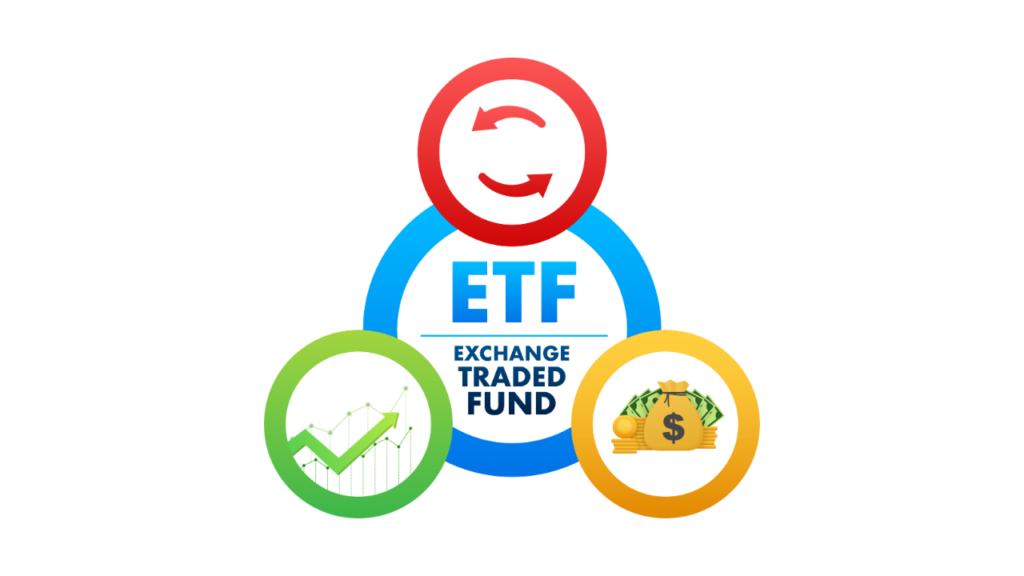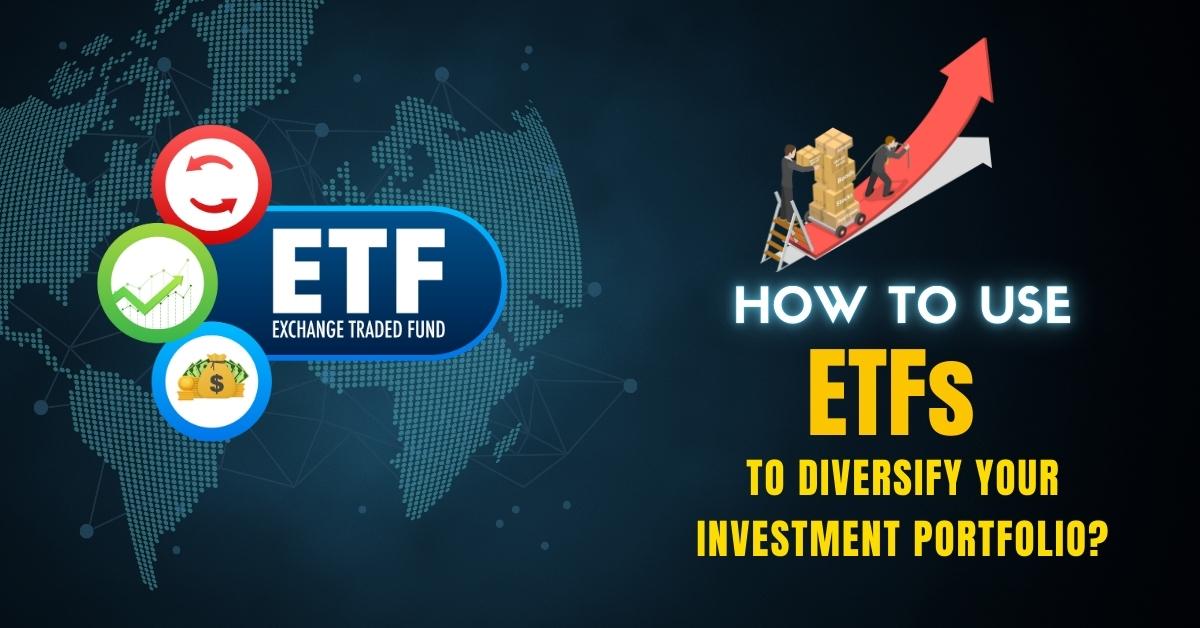Diversification is a cornerstone of effective investing. One of the most versatile and powerful tools available for achieving diversification is Exchange-Traded Funds (ETFs). ETFs offer a way to invest in a broad range of assets without having to buy each individual security separately. This article will delve into how ETFs can be used to diversify your investment portfolio, highlighting their benefits, strategies for implementation, and practical tips for choosing the right ETFs.
Understanding ETFs: What Are They?

Exchange-Traded Funds (ETFs) are investment funds traded on stock exchanges, much like individual stocks. They hold a collection of securities, such as stocks, bonds, or commodities, and aim to replicate the performance of a specific index or sector. ETFs offer the flexibility of trading throughout the day, like stocks, and often have lower fees compared to traditional mutual funds.
The key feature of ETFs is their ability to provide exposure to a diverse range of assets within a single security. This diversification helps reduce risk and smooth out potential volatility, making ETFs a popular choice for both novice and experienced investors.
The Benefits of ETFs for Diversification
ETFs offer several benefits for diversification:
- Broad Exposure: ETFs can provide exposure to entire market sectors, geographic regions, or asset classes. This allows investors to spread their risk across various investments.
- Cost Efficiency: ETFs typically have lower expense ratios compared to actively managed mutual funds, which helps investors save on fees.
- Liquidity: ETFs trade on major exchanges and can be bought or sold throughout the trading day, offering liquidity and flexibility.
- Transparency: Most ETFs disclose their holdings daily, allowing investors to see exactly what assets they own.
These benefits make ETFs a valuable tool for constructing a well-diversified investment portfolio.
Also Read: How to Use Robo-Advisors to Manage Your Investments?
Types of ETFs and How They Work?
ETFs come in various types, each serving different purposes. Here are some common types:
- Stock ETFs: Track specific stock indices like the S&P 500 or NASDAQ.
- Bond ETFs: Invest in fixed-income securities, providing income and stability.
- Sector and Industry ETFs: Focus on specific sectors like technology, healthcare, or energy.
- International ETFs: Provide exposure to markets outside your home country.
- Commodity ETFs: Invest in commodities such as gold, oil, or agricultural products.
Each type of ETF operates by pooling together assets and aiming to replicate the performance of an index or sector. Understanding these types can help you choose the right ETFs to meet your diversification goals.
How to Choose the Right ETFs for Your Portfolio?
Selecting the right ETFs involves considering several factors:
- Investment Goals: Determine whether you want to focus on growth, income, or a balance of both.
- Expense Ratios: Lower expense ratios can help maximize returns over time.
- Liquidity: Ensure the ETF has enough trading volume to avoid high bid-ask spreads.
- Holdings: Review the underlying assets to ensure they align with your investment strategy.
Using these criteria will help you select ETFs that best fit your portfolio needs and diversification objectives.
Also Read: Why Index Funds Are the Best Investment for Beginners?
Strategic Approaches to ETF Diversification
Effective ETF diversification strategies include:
- Asset Allocation: Mix different types of ETFs (stocks, bonds, and commodities) to balance risk and return.
- Geographic Diversification: Include international ETFs to gain exposure to global markets.
- Sector Rotation: Adjust sector allocations based on economic cycles and market trends.
Implementing these strategies can help you build a robust portfolio that mitigates risk and capitalizes on various market opportunities.
Common Mistakes to Avoid When Investing in ETFs
Investing in ETFs can be straightforward, but avoiding common pitfalls is crucial:
- Overconcentration: Avoid putting too much of your portfolio into a single ETF or sector.
- Neglecting Costs: Watch out for hidden costs like trading commissions and bid-ask spreads.
- Ignoring Tracking Error: Ensure the ETF accurately tracks its benchmark index.
By steering clear of these mistakes, you can enhance the effectiveness of your ETF investments.
ETFs vs. Mutual Funds: A Comparative Analysis
While both ETFs and mutual funds offer diversification, they have distinct differences:
- Trading: ETFs trade on exchanges throughout the day, while mutual funds trade at the end of the trading day.
- Fees: ETFs generally have lower expense ratios than mutual funds.
- Transparency: ETFs usually disclose holdings daily, while mutual funds do so quarterly.
Understanding these differences can help you choose between ETFs and mutual funds based on your investment preferences and goals.
How to Analyze ETF Performance?
To evaluate ETF performance:
- Track Record: Review historical performance compared to the benchmark index.
- Expense Ratio: Assess the cost of owning the ETF relative to its performance.
- Holdings: Examine the underlying assets to ensure they align with your investment strategy.
Regularly analyzing these factors can help you make informed decisions about your ETF investments.
Case Studies: Successful ETF Diversification Strategies
Examining real-world examples of successful ETF strategies can provide valuable insights:
- Case Study 1: A diversified portfolio using a mix of domestic and international ETFs to balance growth and stability.
- Case Study 2: Utilizing sector ETFs to capitalize on emerging market trends and economic cycles.
These case studies highlight how strategic ETF diversification can lead to successful investment outcomes.
Future Trends in ETF Investing
The ETF market is evolving with several emerging trends:
- Thematic ETFs: Focusing on specific themes like sustainability or technology.
- Active ETFs: Combining active management with the ETF structure.
- Blockchain and Crypto ETFs: Providing exposure to digital assets and blockchain technology.
Staying informed about these trends can help you adapt your investment strategy to capitalize on new opportunities.
Must Read: How to Reduce Your Investment Risk with Proper Planning?
Conclusion
ETFs offer a powerful way to diversify your investment portfolio, providing broad exposure, cost efficiency, and flexibility. By understanding the types of ETFs, strategic approaches, and common pitfalls, you can effectively use ETFs to enhance your portfolio’s performance. Keep an eye on emerging trends to stay ahead in the evolving ETF landscape.
FAQs
What are ETFs and how do they work?
ETFs are investment funds traded on stock exchanges that hold a collection of securities and aim to replicate the performance of a specific index or sector.
How can ETFs help with diversification?
ETFs provide exposure to a wide range of assets within a single security, reducing risk and smoothing out potential volatility.
What factors should I consider when choosing ETFs?
Consider your investment goals, expense ratios, liquidity, and the underlying assets of the ETFs.
What are some common mistakes to avoid with ETFs?
Avoid overconcentration, neglecting costs, and ignoring tracking error.
How do ETFs compare to mutual funds?
ETFs trade throughout the day and typically have lower fees compared to mutual funds, which trade at the end of the day and may have higher costs.
Hello guys! My name is David Wilson, and I'm a passionate stock market enthusiast and the founder of 9to5Stock. With a deep understanding of market dynamics and a commitment to empowering others, I share valuable insights, strategies, and updates to help investors like you make informed decisions and achieve financial success. Welcome to our community, and let's thrive together in the world of investing!
